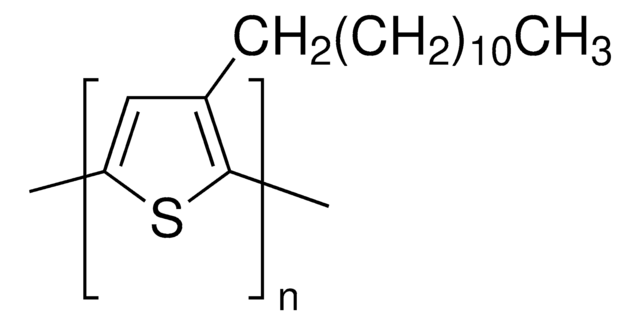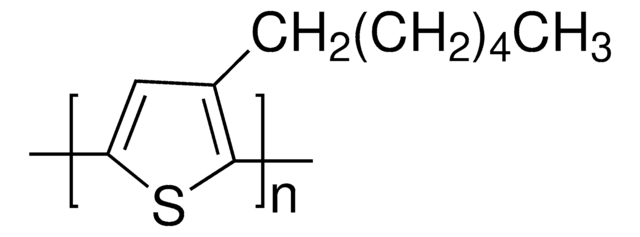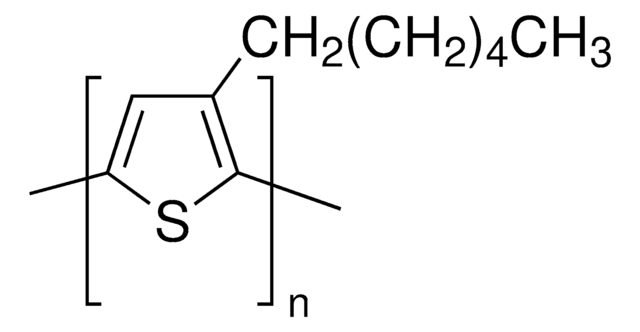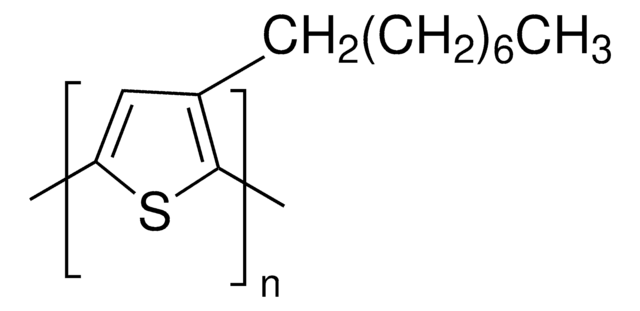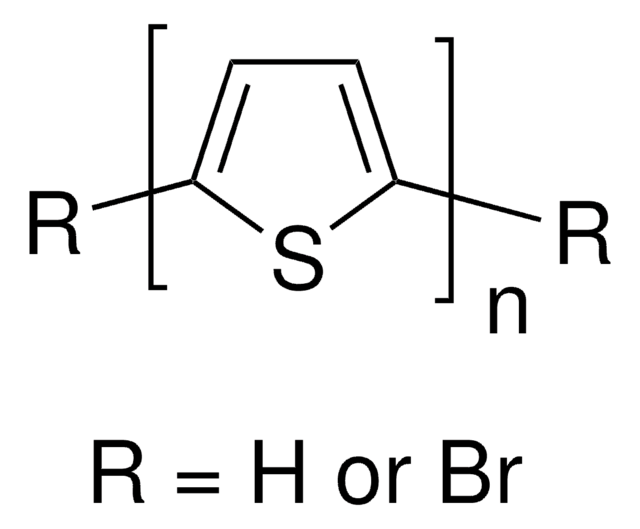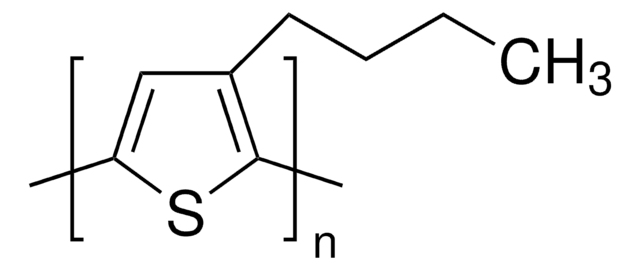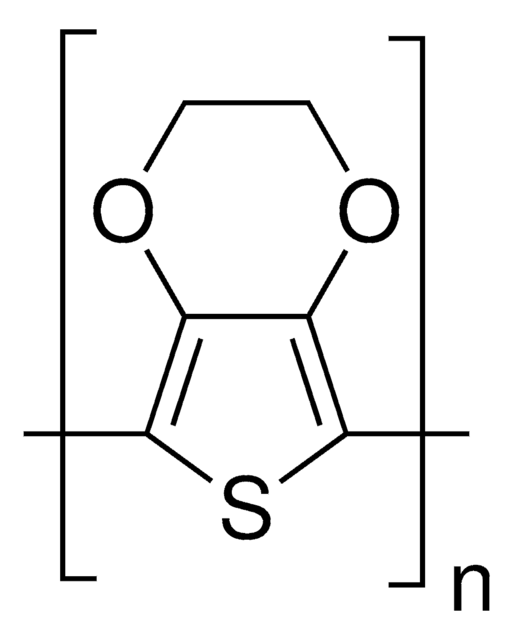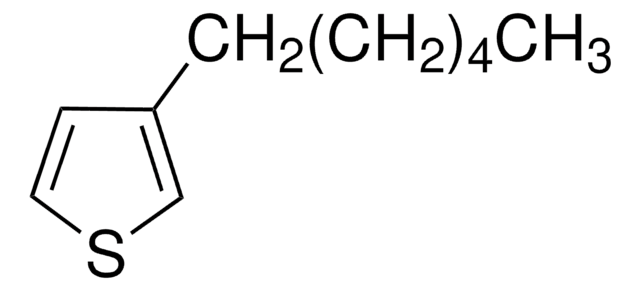495344
Poly(3-decylthiophene-2,5-diyl)
regioregular, average Mw ~42,000, average Mn ~30,000
Sinonimo/i:
P3DT, P3DT-RR
About This Item
Prodotti consigliati
PM
average Mn ~30,000
average Mw ~42,000
Colore
black
Fluorescenza
λex 441 nm; λem 567 nm in chloroform
Stringa SMILE
[s]1cc(cc1)CCCCCCCCCC
InChI
JAYBIBLZTQMCAY-UHFFFAOYSA-N
Cerchi prodotti simili? Visita Guida al confronto tra prodotti
Descrizione generale
Applicazioni
Confezionamento
Note legali
Rieke is a registered trademark of Rieke Metals, Inc.
Codice della classe di stoccaggio
11 - Combustible Solids
Classe di pericolosità dell'acqua (WGK)
WGK 3
Punto d’infiammabilità (°F)
Not applicable
Punto d’infiammabilità (°C)
Not applicable
Dispositivi di protezione individuale
Eyeshields, Gloves, type N95 (US)
Scegli una delle versioni più recenti:
Possiedi già questo prodotto?
I documenti relativi ai prodotti acquistati recentemente sono disponibili nell’Archivio dei documenti.
I clienti hanno visto anche
Articoli
The application of conducting polymers at the interface with biology is an exciting new trend in organic electronics research.
Intrinsically stretchable active layers for organic field-effect transistors (OFET) are discussed. Polymer structural modification & post-polymerization modifications are 2 methods to achieve this.
Il team dei nostri ricercatori vanta grande esperienza in tutte le aree della ricerca quali Life Science, scienza dei materiali, sintesi chimica, cromatografia, discipline analitiche, ecc..
Contatta l'Assistenza Tecnica.